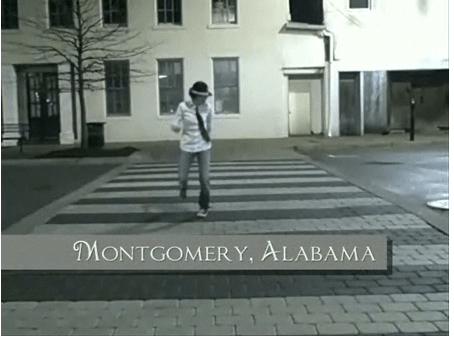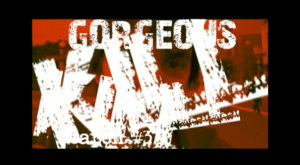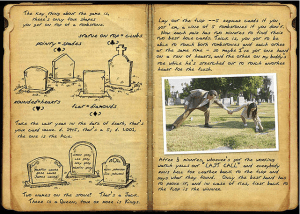I make alternate reality games: games that are designed to improve real lives or solve real problems. I’ve been making ARGs since 2001 — and you can watch trailers for a dozen of my favorite ARGs below.
Many of my games challenge players to tackle real-world problems at a planetary-scale: hunger, poverty, climate change, or global peace, for example (see: EVOKE, World Without Oil, Superstruct). Others are simply designed to make players happier in their everyday lives — by dancing more, say, or by being kind to strangers (see: Top Secret Dance Off and Cruel 2 B Kind). And some have specific positive health impacts in mind: increasing physical activity, for example, or speeding up recovery from a concussion (see: CryptoZoo and SuperBetter).
The biggest influence on my game design is the science of positive psychology. The key question I always ask when making a game: How can this game lead to real and positive impacts? In other words, how can this game help players cultivate:
- the full range of positive emotions and engagement,
- stronger social connections and relationships,
- more resilience in the face of challenges and obstacles,
- more ambitious and surprising accomplishments
- and service to something bigger than ourselves?
MY FAVORITE GAME PROJECTS
Most of the games I make aren’t like typical videogames that you can play whenever you want. Instead, they’re designed as live events, campaigns, or seasons. They happen for 24 hours, or 6 weeks, or 6 months — and then they’re archived online for future players to be inspired to run their own versions, or to continue the game however they see fit. (We do this because most of the games I make require large numbers of people to collaborate, and we like to have critical mass of people playing at the same time.) That’s why, if you want to play any of my games, you need to follow me on Twitter and wait for announcements of a new live game… or use the media and archives below to organize your own play!
SUPERBETTER (2012 ) The game that builds your real-life resilience. More than half a million players so far have used it to tackle challenges like depression, anxiety, insomnia, chronic pain and traumatic brain injury. See the results from the University of Pennsylvania’s recent randomized controlled trial of SuperBetter for treating depression and anxiety — this game eliminates six symptoms of depression in six weeks of play!
My role: Inventor and chief creative officer for SuperBetter Labs.
- Check out this review to learn how the game works
- Play it online for free
- Get the iPhone app!
FIND THE FUTURE (2011). 500 authors. 1 night. 1 book.
My role: Creative director. Developed with Kiyash Monsef and Natron Baxter for the New York Public Library.
- So what really happened? Here’s the inside story… or check out this player’s report.
- Bonus: You can download a PDF of the book written by our players, 100WaysToMakeHistory.
OPRAH’S THANK YOU GAME. (2012) Spreading gratitude to 500 million people worldwide.
My role: Creative director. Developed with the Oprah Winfrey Network (OWN).
- So how did it work? Watch our How to Play video!
EVOKE (2010). A crash course in changing the world.
My role: Creative director. Developed with Kiyash Monsef and Natron Baxter for the World Bank Institute.
- So what really happened? Watch CNN news coverage of EVOKE...
- Bonus: Explore the game from the inside-out with our EVOKE blog.
WORLD WITHOUT OIL (2007). Play it — before you live it.
My role: Participation architect/game designer. Created by Writer Guy, Inc. for ITVS.
- So what really happened? World Without Oil has its own wikipedia article…
- Bonus: Lesson plans for using World Without Oil in the classroom!
CRYPTOZOO (2009). The cryptids are out there. Are you chasing them?
My role: Creative director. Developed for the American Heart Association.
- So what really happened? VentureBeat covers Cryptozoo…
- Bonus: Behind-the-scenes at Cryptozoo’s launch event…
THE LOST RING (2008).
My role: Game director. Developed by AKQA for McDonald’s and the International Olympic Committee for the 2008 Summer Games.
- So what really happened? AdWeek awards The Lost Ring the grand prize…
- Bonus: Check out the player-created Find the Lost Ring wiki documenting the entire 6-month game!
THE LOST SPORT (2008). The Ancient Greeks banned it. We’re playing it anyway.
My role: Inventor.
- So what really happened? Listen to the mysterious legent of the Lost Sport of Olympia…
- Bonus: Listen to all of the original Lost Secrets of the Olympics podcasts on dotsub!
SUPERSTRUCT (2008). 8000 future forecasters, 5 superthreats, and 1 Global Extinction Awareness System.
My role: Game director. Developed by the Institute for the Future.
- So what really happened? Here’s an example of how one organization used the game as a springboard for inventing the future…
- Bonus: Download all of the Institute for the Future research generated with the players of this game!
FORESIGHT ENGINE (launched as Signtific Lab in 2009, relaunched in 2010). The world’s first social forecasting platform.
My role: Creative director. Developed by Natron Baxter at the Institute for the Future.
- So what really happened? Fast Company explains…
- Bonus: See how one medical research organization used the foresight engine to generate creative ideas of speeding up the process of getting new cures to market!
SUPERBETTER (2009). Don’t get back to normal. Get to extraordinary.
Before I played the game:
After I played the game:
My role: Creator.
- Bonus: Update: A clinical trial and a SuperBetter product is now in development! More details coming soon…
TOP SECRET DANCE OFF (2008). Do you have the dance secret inside you?
My role: Creator.
- So what really happened? The design philosophy explained on Boing Boing TV…
- Bonus: This game really caught in in New Zealand and received a lot of TV coverage. This evening news story was my favorite…
CRUEL 2 B KIND (2006). A game of benevolent assassination.
My role: Creator / game designer. Developed with Ian Bogost.
- So what really happened? Read the rules and find out…
- Bonus: Download your handy pocket guide to Benevolent Assassination!
TOMBSTONE HOLD ‘EM (2005). Play your respects.
My role: Inventor.
- So what really happened? Tombstone Hold ‘Em was a live event. See details of how they were organized here…
- Bonus: The full story of Tombstone Hold is told for the first time anywhere in my book Reality is Broken in chapter 10 “Hacking Happiness…”
I LOVE BEES (2004). Is that payphone ringing? Maybe you should answer it.
My role: Lead designer/community (aka payphone director!). Created by 42 Entertainment for Microsoft/Bungie.
- So what really happened? Wired captured the phenomenon perfectly.
- Bonus: Find out how the game helped players create collective intelligence in my case study for MIT Press.
EARLY PROJECTS
I had the opportunity to collaborate with amazing people on some very strange and innovative projects during the first few years of my game design career. Here are some of my favorite early works:
The Go Game (Wink Back, Inc, created by Ian Fraser and Finnegan Kelly) I was a writer/game designer with The Go Game (the first, and still best, urban adventure game) from 2001-2002. The game is still going strong today — and everyone should play it at least once in their lives.
Bounce (Berkeley Institute of Design, 2006, with Greg Niemeyer, Ken Goldberg, and Irene Chien) * also played at the International Symposium for Electronic Arts (ISEA). This is a conversation game designed to be played over the phone (or Skype!) by two people at least 20 years apart in age.
Tele-Twister (Alpha Lab, with Ken Goldberg and Dezhen Song, 2003). For months, I allowed the Internet to bend me every Friday into a pretzel in an epic combat with another tele-twister. It was awesome.
ORGANUM: The Game (Berkeley Institute of Design, 2005, with Greg Niemeyer, Ryan Shaw and Dan Perkel) * also played at New Langton Arts, the Vancouver New Horizons Game Exhibit. A literally breath-taking (you will be gasping for breath) vocal-interface game in which three different players control an avatar’s movement in one of each of 3 axes (X, Y, Z) based on the pitch of their voice.
The Latchkey Project. (with Kiyash Monsef, 2005) My most existential game: We sent you a key with clues. You wore it around your neck for the rest of your life, hoping to find the lock it would open. Here’s one player’s experience.
The Ministry of Reshelving – (with Kiyash Monsef, George Porter, and Monica Stufft, 2005). The first game ever played on Flickr. (Not counting, of course, the fact that Flickr was originally part of a game itself.)
Flash Mobs – (with the world, 2003 — but admit it, San Francisco flash mobs were the best.)
G4M3RS, a documentary (directed and produced by Kiyash Monsef, 2003) This was the first documentary about competitive gamers — and it focuses on Counter-Strike community. (And you can still order the DVD!)
Demonstrate (Alpha Lab, 2004, with Ken Goldberg, Irene Chien and Kris Paulsen) * featured on the Whitney Art Museum’s art portal. What happens when you let gamers control a collaboratively-operated webcam pointed at UC Berkeley’s famous Sproul Plaza for one month — 24 hours a day, 7 days a week?
SECRET…!
Since you’ve come so far, let me share a secret with you. I don’t talk about it as much as the positive psychology influences, but my work also draws deeply on Buddhist philosophy. I am inspired by the Buddhist goal of ending suffering on Earth — and I know that when we are immersed in a good game, we do not suffer. My research shows that games are an extraordinary and universal way to alleviate all kinds of suffering — including boredom, anxiety, depression, loneliness, despair and even physical pain. For this reason, I believe most game developers are on a humanitarian mission (whether they know it or not!). I am also curious about the ways in which good games seem to help us develop the seven positive traits that Buddhists believe can help end suffering: mindfulness, investigation, energy, joy, relaxation, concentration, and equanimity. Is it possible that games and Buddhism share the same epic win?







Your mission is wonderful! Can you keep me updated when you release a new game?